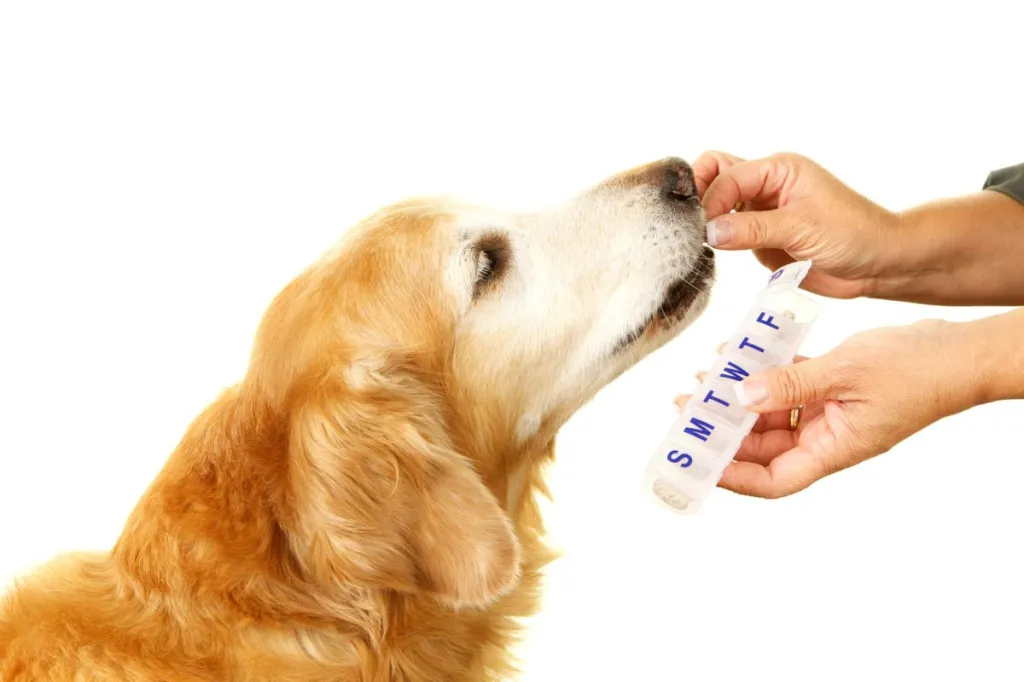Ketoconazole is a drug used to treat fungal infections in dogs. A generic form of Nizoral and Ketochlor, veterinarians can also use it to treat Cushing’s disease. The drug works by blocking cortisol formation in the adrenal glands and inhibiting the production of the fungal cell walls. Other forms of this drug have been created to reduce the number of potential side effects. Itraconazole and fluconazole are two of these drugs.
When giving the medication to your dog, you should always follow strict veterinary instructions and talk to your vet if you notice any concerning side effects. Here’s what you should know about the uses, dosage, and side effects of ketoconazole for dogs.
Uses of ketoconazole for dogs
Ketoconazole is used to treat both external and internal fungal infections in dogs. Vets may treat infections of the lymph nodes, skin, nails, respiratory system, bone, and other parts of the body with this drug.
There’s also a shampoo that mixes ketoconazole with another drug, chlorhexidine. This shampoo can fight fungal and bacterial infections of the skin.
Because this drug can block the formation of cortisol in the adrenal glands, vets may also use it as a treatment option for dogs with Cushing’s disease.
Dosage of ketoconazole for dogs
While online guidelines for typical use of the drug in dogs are available, they must not replace your veterinarian’s advice for your individual pet.
The usual dosage of ketoconazole for dogs depends on the condition being treated and is prescribed depending on your dog’s body weight. The drug should be given every 12 to 24 hours depending on your vet’s instructions.
It’s available in 200 mg tablets, and dogs should take it orally. It’s only available with a veterinarian’s prescription. Follow your vet’s instructions closely when giving it to your dog.
Side effects of ketoconazole for dogs
There are a few side effects of ketoconazole in dogs that you should be aware of. One side effect is that it blocks cortisone in the adrenal gland, which can be harmful in some cases but is a benefit when treating Cushing’s disease.
Here are a few other side effects you may see in dogs who take ketoconazole:
- Dizziness
- Abdominal pain
- Fatigue
- Itching and rashes
- Vomiting
- Diarrhea
- Loss of appetite
- Jaundice
- Sensitivity to light
- Liver damage
- Blood disorders
If any of these side effects become concerning, contact your vet, as they may wish to alter the dosage or seek an alternative form of treatment.
Make sure your veterinarian is aware of any other medications your dog is taking, especially antacids, as these can react poorly with ketoconazole. Some medications may even have fatal side effects when mixed with this drug.
This drug should not be given to any dogs who are pregnant or nursing.
As with all medications, there’s a chance that a dog will have an allergic reaction that can lead to anaphylaxis, a potentially deadly condition. If you see the signs of an allergic reaction in your dog — including swelling, itching, hives, and other symptoms — contact your vet immediately.









